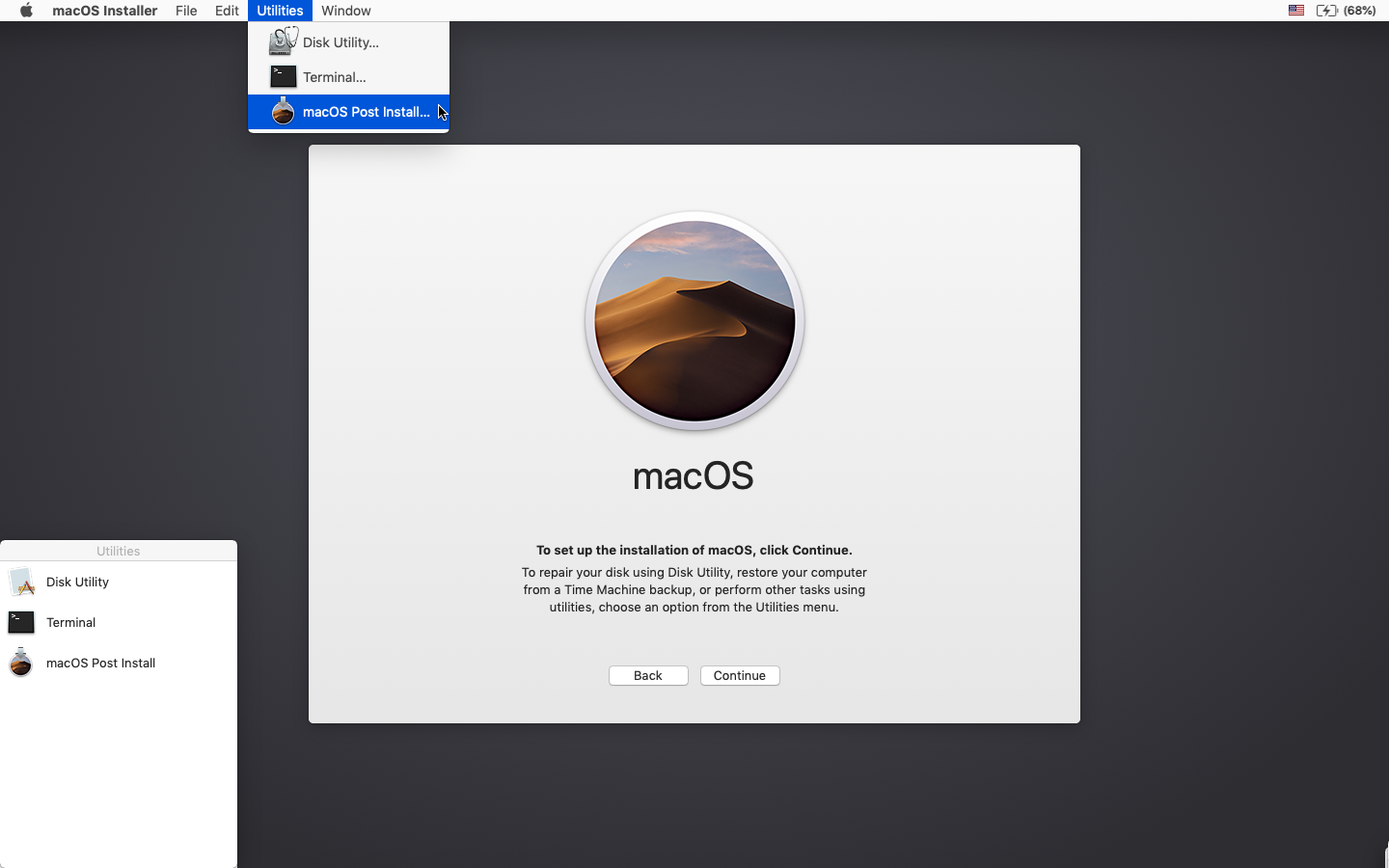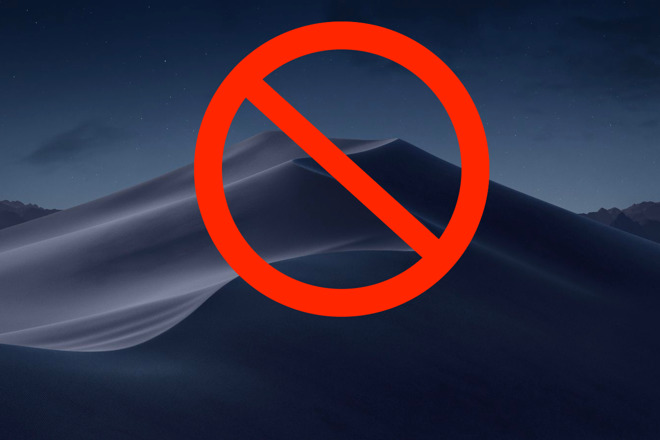

- #MACOS MOJAVE PATCHER TOOL FOR UNSUPPORTED MACS MAC OS#
- #MACOS MOJAVE PATCHER TOOL FOR UNSUPPORTED MACS INSTALL#
- #MACOS MOJAVE PATCHER TOOL FOR UNSUPPORTED MACS UPDATE#
#MACOS MOJAVE PATCHER TOOL FOR UNSUPPORTED MACS INSTALL#
When the install completes, reboot back onto the installer drive. Install macOS normally onto the desired volume.Ĩ. A demo of the modified booting process can be viewed here.ħ. It is not quite as clean as native booting, but will not cause any issues while running Mojave. If you decide to use APFS, a custom booting method will be installed by the post-install tool, as the firmware of these unsupported machines does not natively support booting from APFS volumes. If you use APFS, you will not have a bootable Recovery partition.
#MACOS MOJAVE PATCHER TOOL FOR UNSUPPORTED MACS UPDATE#
Important Note: Using APFS is REQUIRED in Mojave in order to receive system updates via the normal Software Update method. If formatting an entire drive, ensure GUID is selected.
#MACOS MOJAVE PATCHER TOOL FOR UNSUPPORTED MACS MAC OS#
Select the disk or partition you want to install on, and erase it, ensuring to use either Mac OS Extended (Journaled), or APFS as the filesystem type. When the installer boots, open Disk Utility from the Utilities menu, or by double-clicking it in the Utilities window on the bottom left corner of the screen.Ħ. Otherwise, you can simply skip these steps and install to your volume containg a previous version of OS X, and it'll do an in-place upgrade.ĥ. Note: Only perform steps 5 and 6 if you intend to do a clean install. When the operation completes, boot your target unsupported Mac off the USB drive you just created by holding down the Option key while turning on the machine, and selecting the drive. Next, select your USB drive in the Target Volume list, and click "Start Operation."Ĥ. *Ensure that the tool successfully verifies the app.ģ.

Open the "macOS Mojave Patcher" tool, and browse for your copy of the macOS Mojave Installer App. Insert your desired USB drive, open Disk Utility, and format it as OS X Extended (Journaled).Ģ. When installing, ensure your system is plugged in to power, or the update will not be installed.ġ. If you have NOT previously installed High Sierra, you can download and install this package to install the latest BootROM version. Important Note: If you have a machine that supports High Sierra natively, you MUST ensure you have the latest version of the system's BootROM installed if you want to boot from an APFS volume. A USB drive that's at least 16 GB in size.In the Menu Bar, simply select "Tools > Download macOS Mojave."

This can be obtained from the Mac App Store using a machine that supports Mojave, or by using the built-in downloading feature of the tool.


 0 kommentar(er)
0 kommentar(er)
